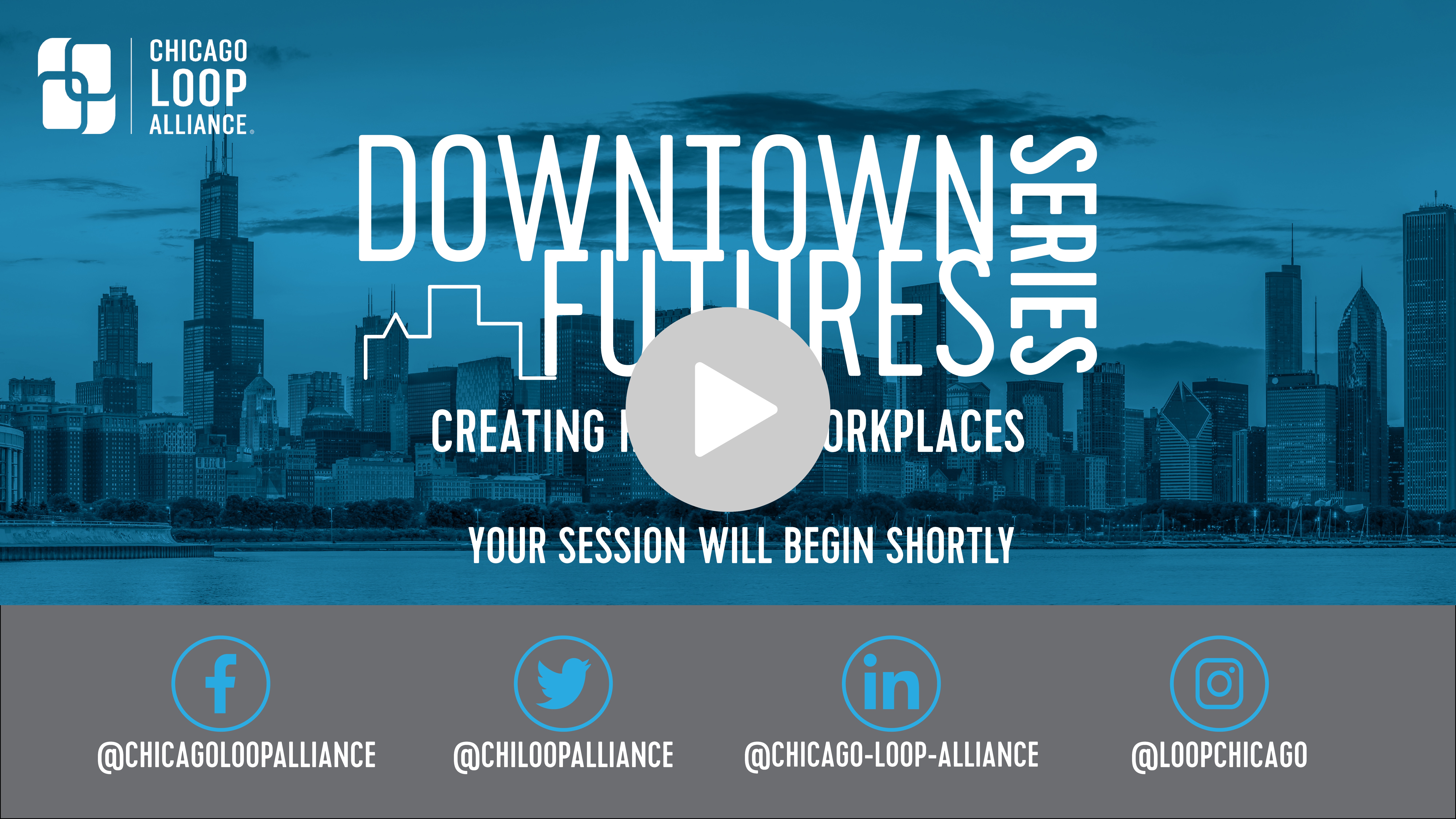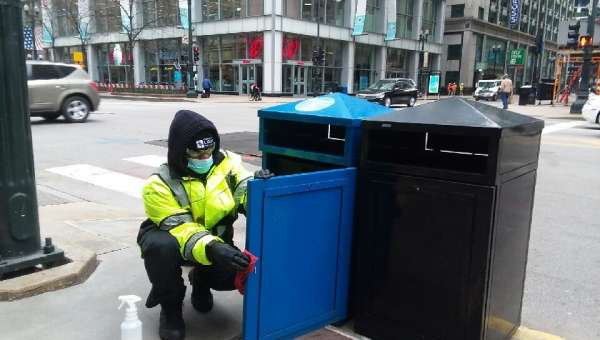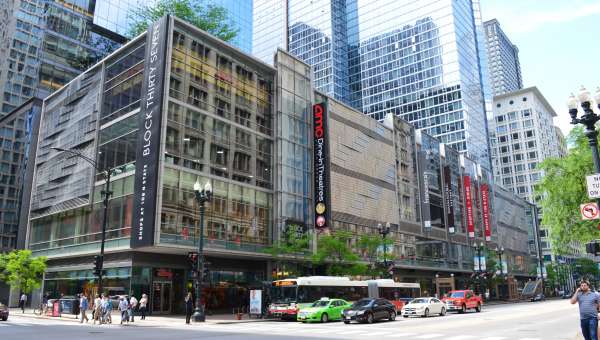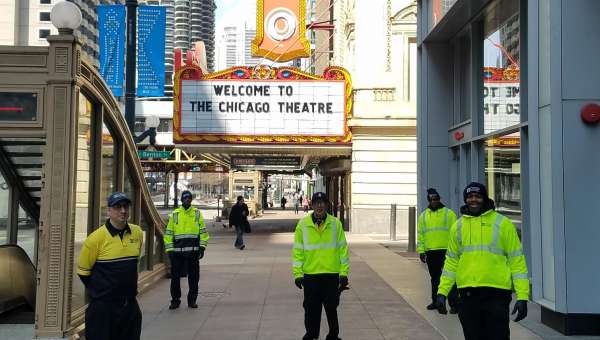Posted 6 years ago in Trending
5 MIN READ - What does returning to work look like after a public health crisis? That’s the question Chicago Loop Alliance explored with its May 20 Downtown Futures Series: Creating Healthy Workplaces webinar. View a recording of the full presentation here.
Panelists Marie-Célie Guillaume (CEO of Paris La Défense and President of the Global Business Districts Innovation Club, of which Chicago Loop Alliance is a co-founding member), Kevin Purcell (President, Leasing & Management Serivces for MBRE), and Matthew Buecher (Senior Director of Global Real Estate Design for Salesforce) addressed over 500 virtual attendees from around the world and answered questions moderated by David Broz (Principal for Gensler and member of the Chicago Loop Alliance Board of Directors).
The event began with Guillaume sharing the French experience. She is the CEO of the organization that manages the Paris La Défense business district, which is home to 180,000 workers during normal times and 20,000 residents. France loosened its lockdown on May 11, allowing for office employees to return to work while adhering to guidelines around social distancing and masks.
During the lockdown, 98 percent of Paris La Défense workers stayed home. Since the loosening on May 11, about 10 percent of workers in the district have returned to the office. Guillaume predicts in June, 20-25 percent of workers may be back, and in September, possibly 70 percent.
One of the biggest issues faced in a reopening is how people will safely get to work. France has been a leader in installing new bike infrastructure, and clean and safe measures have been put in place on public transportation. There is encouragement for people to continue working from home if and when they can, and for companies to stagger their work hours to avoid a morning and afternoon rush.
A major part of Pari La Défense’s responsibilities is maintaining public space. During the pandemic, emphasis has shifted to keeping touch points—everything from elevator buttons to trash bins—clean and disinfected. This is a trend in downtown management around the world, including Chicago Loop Alliance.
Kevin Purcell from MBRE spoke next, summarizing the role building owners and managers play in the return of office workers. Since the COVID-19 crisis began, MBRE has focused on solving problems for their current clients, rather than marketing to new clients. This problem solving includes nuts-and-bolts issues like how to keep spaces clean, how to optimize HVAC systems, and how to ensure elevators are safe and healthy. Problem solving also involves tenant relations, including how to communicate with tenants about social distancing and other safe protocols, and how to handle concerns about rent collection. Through the crisis, MBRE has enlisted infectious disease experts and epidemiologists to inform their best practices.
Last to present was Matthew Buecher from Salesforce, a cloud-based software company that provides customer relationship management services and a suite of enterprise applications.
Salesforce’s response to COVID-19 was broken down into three stages: crisis response, recovery, and “the new normal.”
During crisis response, Salesforce launched new products to help customers communicate with their communities. During recovery, the company launched Work.com, a set of solutions and resources to help businesses and communities reopen safely. This includes applications for data management to make data driven decisions during reopening. Buecher said that while working from home at the start of any stay at home orders felt like a light switch, returning to work will be more like a dimmer.
Buecher said in a time like this, there’s no such thing as overcommunicating. Signage and other materials reminding employees of social distancing and other best practices are essential.
After the panelists presented, questions from attendees were taken. One participant asked what Marie-Célie Guillaume’s journey to the office looked like in Paris. She said she bikes to her office and is offered hand sanitizer when she arrives. Four people are allowed in each elevator. Masks are compulsory in meeting rooms, and meeting rooms are restricted to 50 percent of capacity. Her office is open/flexible, with no assigned desks, so workers can socially distance and take all of their belongings home with them at the end of the day. Thorough cleanings of the office occur nightly.
“Offices are not dead,” Guillaume said. “You need to go on seeing people physically to create a common culture, to create an environment for innovation. That remains very important. But probably we will change the ways we design our offices.”
One of the most popular questions was what building owners and managers were doing to ensure elevators are safe.
“We spent hours talking about this, literally,” said Kevin Purcell. “The key to all of this is social distancing, PPE, and proper hygiene. We’re hoping that tenants consider staggering their staff as they come back so not everyone is coming back at 8 or 8:30 in the morning, because obviously that’s going to create a problem.”
While health and safety at the office itself is a major concern, workers also asked how their trip to the office will be different to keep them healthy. In Paris La Défense, Guillaume said there are generous public spaces that allow people to spread out, and those spaces are being aggressively cleaned and disinfected.
While COVID-19 has presented challenges unlike any faced in this lifetime, it is worth remembering that innovation comes during intense struggles. Disney came out of the Great Depression. Microsoft amid the 1970s oil crisis. Chicago darling Groupon debuted in 2008, the height of the Great Recession.
“We’ve witnessed Chicago evolve into a tech powerhouse,” said David Broz. “It’s a millennial destination of choice and has been an ever-increasing tourist destination. Chicago is poised for an innovative leadership position in this post-COVID world. With our over 200,000 college and university students and our 36 Fortune 500 companies, our talent base is primed to be part of a forward trajectory where Chicago can be a leader.”
The next Downtown Futures Series virtual event will cover the topic of retail innovations during COVID-19. Check Chicago Loop Alliance’s website for updates and details, and sign up for CLA updates to stay in the Loop.




